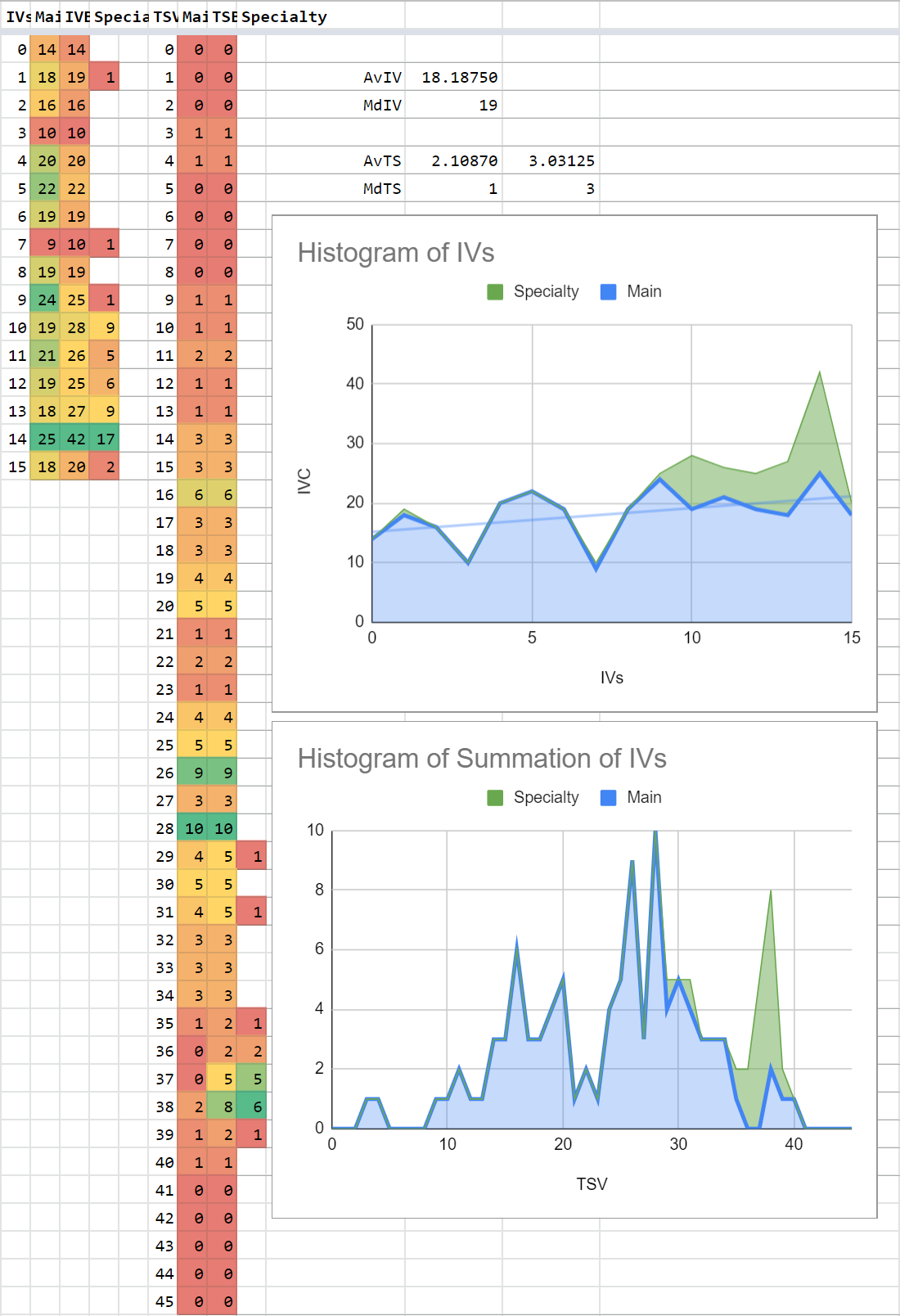The Actual News:
OK, just a minor little update on Pokémon GO’s IV stats. I’ve added maybe 45 new entries, and it’s continuing to confirm the idea that the IVs are skewed towards better stats. Below is the graph and my data. That said, I’ve added a new column to the data; previously I left out “specialty Pokémon”, as in ones hatched form eggs, caught form raids, or are ones you receive in Professor-related research tasks, etc, as those CLEARLY had skewed stats (which is fine, since they’re “rewards” of sorts). This time around, however, I’ve included their data, but I made sure to show which is what; therefore, in both sets of data, there are three columns:
- 1st Column = data WITHOUT “specialty Pokémon”
- 2nd Column = data WITH “specialty Pokémon”
- 3rd Column = difference in the data
So the below image, the main data (values in the 1st column) is graphed in blue, while the data from the “specialty Pokémon” is in green. Since technically the values in green are the values in the 3rd column, as this is a “stacked graph”, the values in the 2nd column are represented by blue plus green.

Again, you can still see in the top graph a general upward trend—as represented by the faint trendline—with the IVs of the specialty Pokémon added in green, clearly towards the “better IVs” end. Similarly, the graph of the summation of IVs certainly depicts a bell graph (which is expected) but it’s still centered around 28, not 22-23 if the assignment of IVs were truly randomized.
Anyways that’s it for now… I’ll try to gather data of another 150 Pokémon before returning for another report. That said, in Statistics there is a concept that one doesn’t need to gather data from EVERY possible source in order to produce an accurate description of it, but instead some relatively small value would be quite sufficient. In this case, I probably won’t need to gather data on millions, or even thousands, of Pokémon from the game to get an accurate analysis, but instead something like 500-1000 would be plenty. At the very least, since every possible combination of IVs can be expressed in either 816 or 4096 ways (depending on how you want to define it), I figure that I would need somewhere between those two values to ensure that the results of my data accurately describe the entire system of how IVs are generated in Pokémon GO. And so with data from some 115-ish Pokémon recorded… well, I still have a ways to go.
So lemme get back to you on this.
